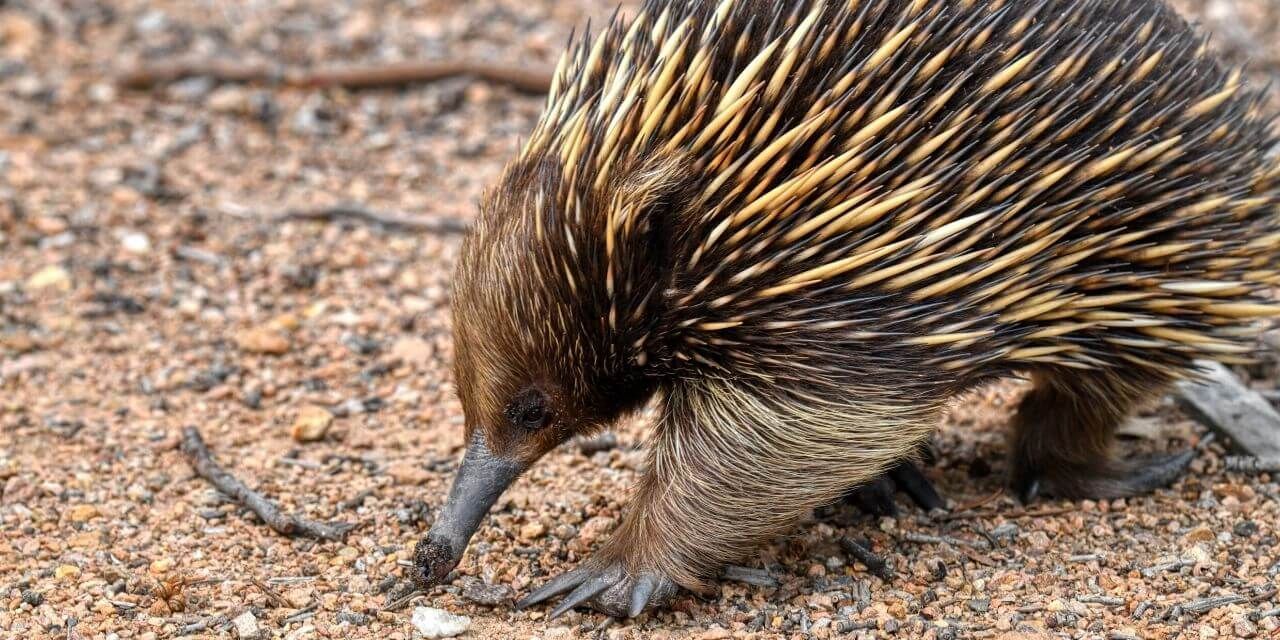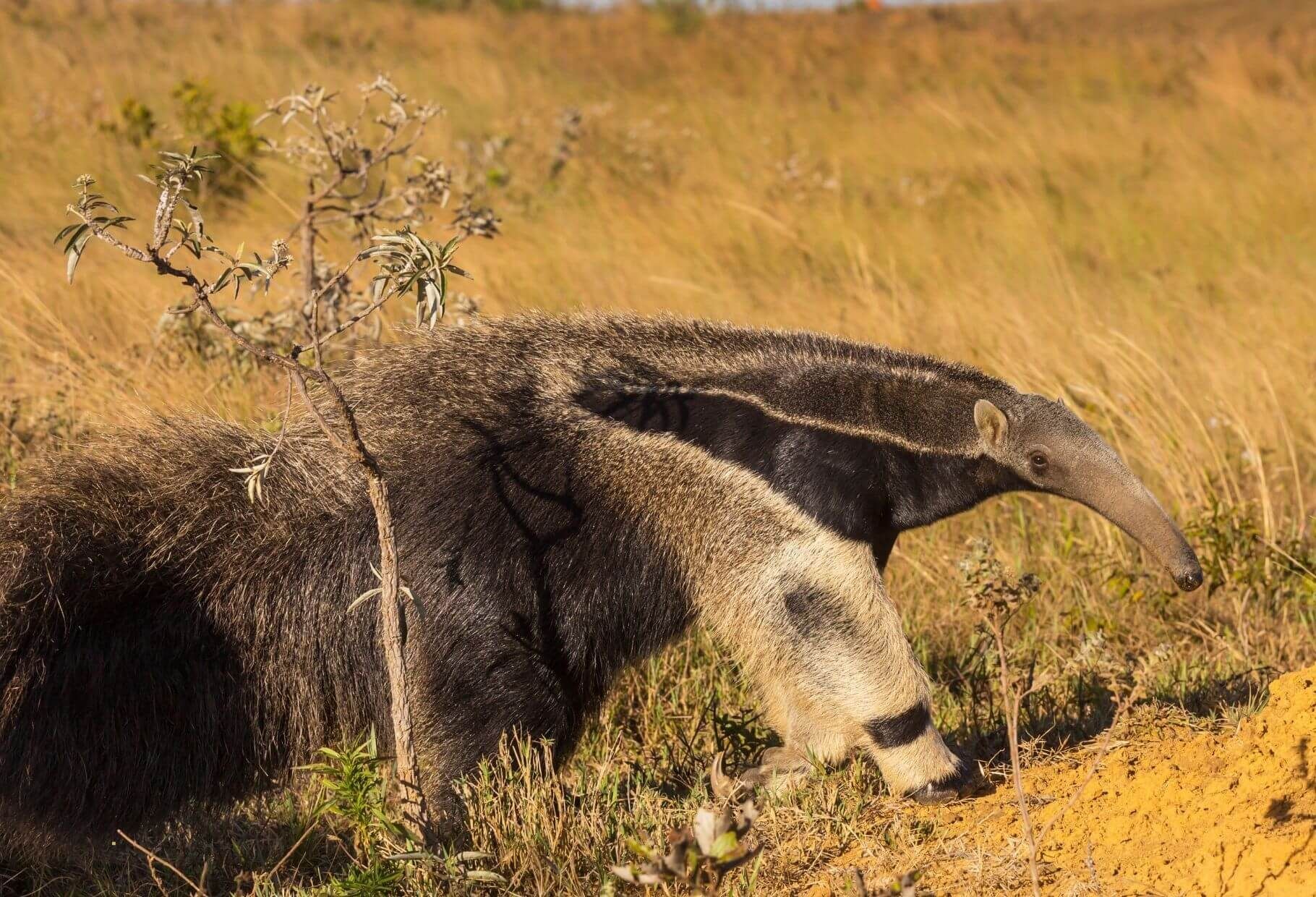Giant Anteaters

Let's Learn About Giant Anteaters
Word of the Week
Insectivore
An insectivore is an animal that feeds primarily on insects.
Anteaters, echidnas, pangolins, and chameleons are all examples of insectivores.
Fast Facts
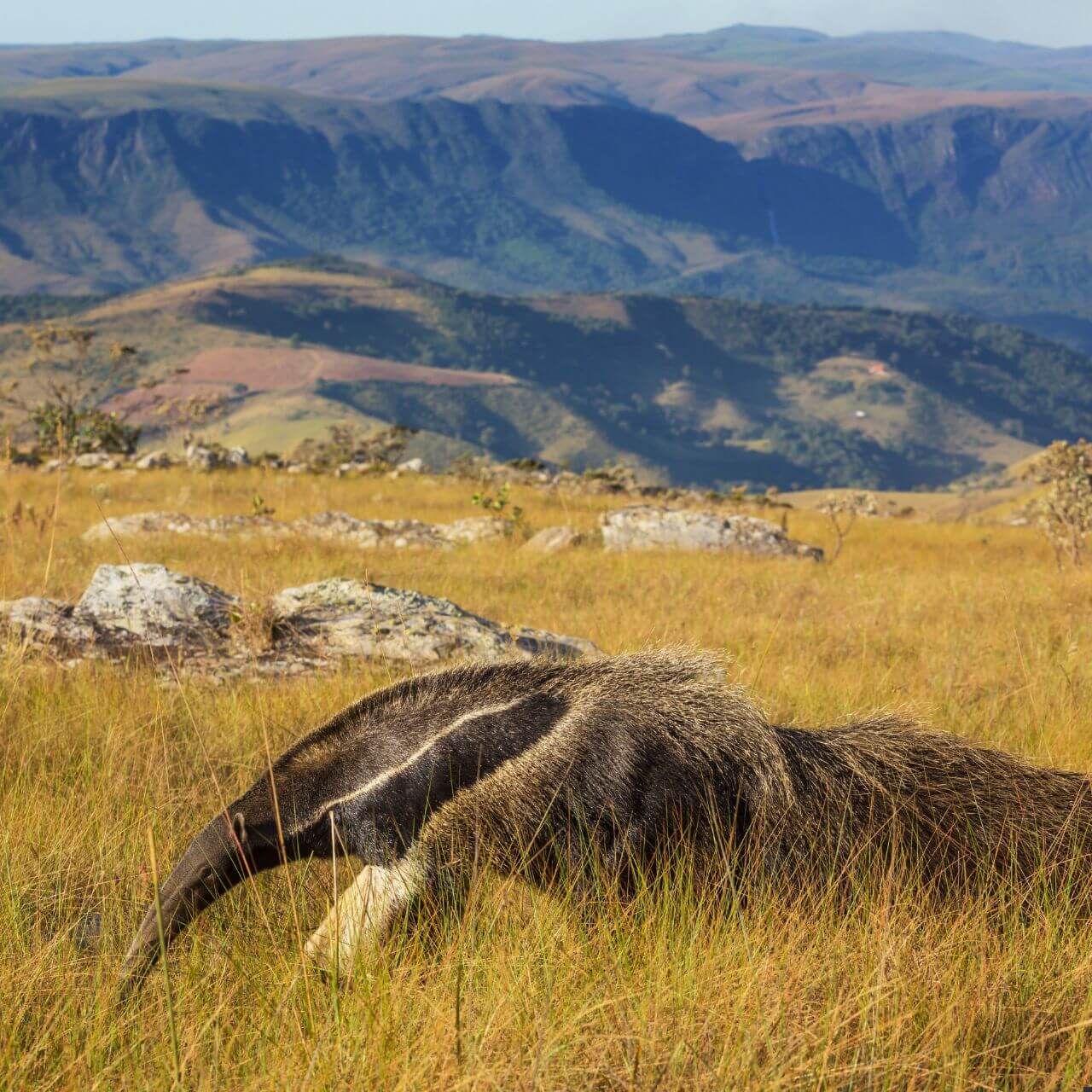
Where do giant anteaters live?
Giant anteaters live in Central America and South America.
They live in a wide variety of habitats including grasslands, forests, and savannas. They use each habitat for a different purpose. Open areas are used for foraging while forested areas are mostly used for resting.
What do giant anteaters eat?
Giant anteaters are insectivores.
More specifically, giant anteaters are myrmecophagous, meaning they eat mostly ants and termites.

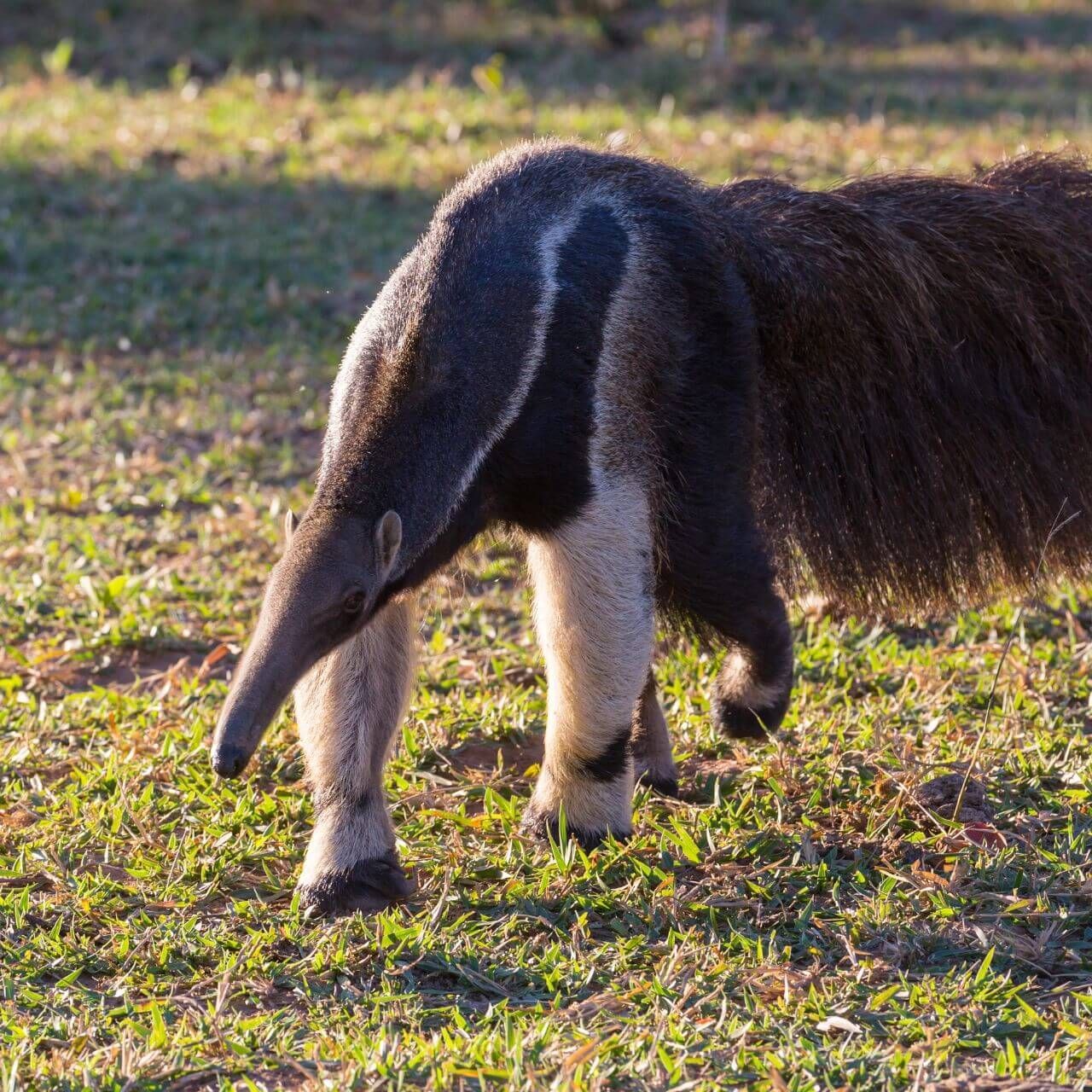
What traits do giant anteater have?
Giant anteaters have many unique adaptations, such as...
- A long, sticky tongue.
- A powerful sense of smell.
- Long, sharp claws used for tearing open ant hills and termite mounds.
- A long, bushy tail.
How many giant anteaters are there?
There is only one species of giant anteater. They are the largest of the four anteater species.
Giant anteaters are classified as vulnerable by the IUCN. Scientists struggle to determine how many exist in the wild. Some sources state there are fewer than 5,000 left in the wild.
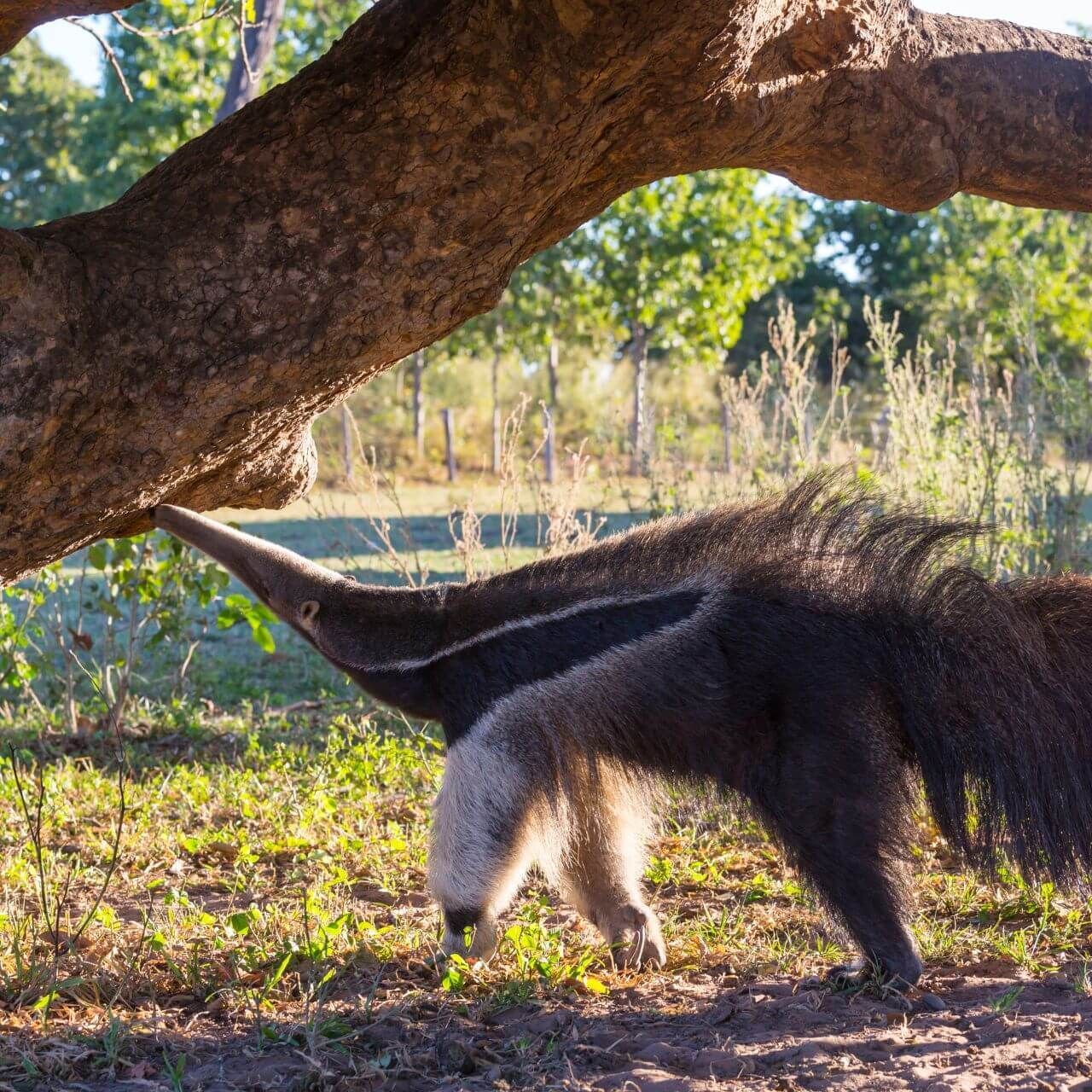
Species Spotlight
Insectivore Adaptations
Imagine being an insectivore. You wake up every day and feast on bugs. It may not sound appetizing to you, but it would sound delicious to some other animals. Anteaters, pangolins, aardvarks, echidnas, chameleons, and frogs are insectivores. Many of these animals have similar adaptations to catch and eat insects.
Tongue
Many insectivorous animals have a long, sticky tongue. A pangolin’s tongue is more than one foot long. Like the anteater’s tongue, it is covered in sticky saliva (spit). Chameleons are also well-known for their extendable tongues that shoot out like an arrow to catch insects.
Teeth
Many insectivores do not have teeth. Like giant anteaters, echidnas do not have teeth. The insects stick to their long tongues and are crushed against the roof of their mouths. Some insectivores, like frogs, have teeth, but they swallow insects whole instead of chewing them.
Claws
Insectivores that eat burrowing insects, like ants and termites, need strong claws to dig. Like giant anteaters, aardvarks have enormous claws that tear apart ant hills and termite mounds. Insectivores like bats catch flying insects in the air, so they do not need strong claws.
Animals that have similar needs often develop similar adaptations. So, even though anteaters, pangolins, echidnas, and aardvarks are not related, they share many traits used to catch and eat insects.
BRAIN BLAST
Select another insectivore. Identify three similarities and three differences between them and giant anteaters.
Conservation Corner
The Dangers of Roadways
The grasslands and forests that giant anteaters call home are quickly changing into cities and farms. New roads are built between them, making it easier for people to travel back and forth. However, the new roads create danger for wildlife as animals travel around their habitat. Giant anteaters are one of the most commonly killed animals on roads, especially in Brazil.
Scientists recently started a four-year study to track the movement of giant anteaters and the impact of roads. They hope to learn what part of the ecosystem anteaters use and where they are most likely to cross highways.
Scientists can take several actions to protect anteaters once they discover the patterns of how anteaters move. They can use signs along the highways to make drivers aware of anteaters crossing the road. They can build wildlife crossings that would go over or under the highway, allowing wildlife to cross safely. They can even use this research when building new roads to avoid building in areas where giant anteaters frequently travel.
You can help support this conservation effort by donating to the Anteaters & Highways project. You can also spread the word about the dangers of road construction for wildlife in your area to help protect native wildlife.
Learn More!
Glossary
Camouflage
The ability for an organism to blend into its surroundings usually to hide from prey or predators.
Chemoreceptors
Sensors used to detect chemicals from the air, water, or other substances. Chemoreceptors are used for smelling and tasting.
Endangered
An organism that is threatened with extinction.
Forage
To search for food.
Forest
An ecosystem with trees that form a closed canopy.
Grassland
An ecosystem with few or no trees that is dominated by grasses.
Insectivore
An animal that feeds primarily on insects.
Mammal
A group of endothermic (warm-blooded) vertebrates that are covered in hair, produce milk for offspring, and generally give birth to live offspring.
Myrmecophagous
An insectivore that feeds primarily on ants and termites.
Pheromone
A communication chemical used to signal information to members of the same species.
Predator
An animal that hunts other animals for food.
Solitary
To live alone.
Species
A closely related group of animals with similar characteristics that are capable of reproducing (example: there is 1 species of gray wolf).
Terrestrial
Living on the ground.
Territorial
Referring to an animal that defends an area (its territory) from other members of its species.
Wildlife Crossing
An area created for wildlife to cross safely under or over a roadway.



